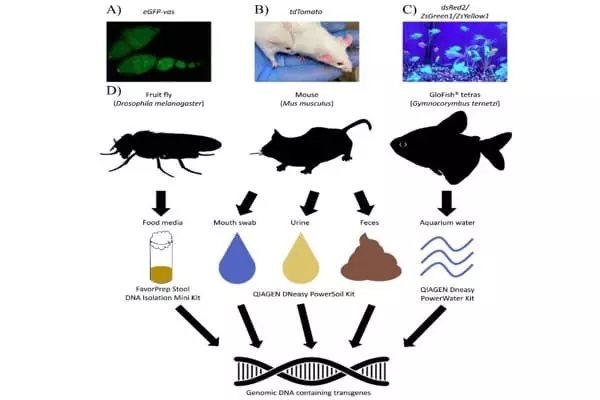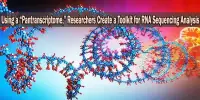The direct manipulation of an organism’s genes to change or improve certain characteristics is referred to as genetic engineering. The vast majority of work on genetically modified farm animals is still in the research stage and has not yet been commercialized. Farm animals, such as sheep, goats, and cows, can, however, be genetically modified to improve specific characteristics. These can include milk production, disease resistance, and increasing the nutritional value of the products for which they are farmed. Cows, goats, and sheep, for example, have been genetically engineered to express specific proteins in their milk.
The artificial transgenes that genetically modified animals leave behind in the environment have been discovered by researchers as a new way to track them. The discovery opens up a powerful new tool for tracking down and managing genetically modified animals that have escaped or been released into the wild.
This means that science can engineer farm animals to grow faster, produce healthier meat and flesh, and be less sensitive to the pain and suffering that are frequently associated with the conditions found in modern factory farms. Genetically modified animals are also created to assist medical researchers in their search for cures for genetic diseases such as breast cancer. Finally, endangered animal species can be cloned, assisting wildlife management in its goals of preserving wild populations of the earth’s biological diversity and ensuring that the genetic information of endangered animals is not lost when the last of the species dies.
Detection of animal transgenes from eDNA can be very useful because it can tell you whether genetically modified animals exist without having to look for them.
Charles Xu
The artificial transgenes that genetically modified animals leave behind in the environment have been discovered by McGill University researchers as a new way to track them. The discovery opens up a powerful new tool for tracking down and managing genetically modified animals that have escaped or been released into the wild.
The magic of eDNA
The researchers demonstrate for the first time in a study published in PLOS ONE that artificial transgenes from a variety of genetically modified animals such as fruit flies, mice, and tetra fish can be detected and sequenced from DNA left behind in soil, water, and in the form of feces, urine, or saliva. These findings could be used to detect the transgenes of genetically modified mosquitos in pools of standing water in areas where they have recently been released, for example. Environmental DNA (eDNA) has proven to be more accurate and efficient than traditional animal monitoring methods, requiring less time and cost.
“Until now, no one had applied these environmental DNA methods to genetically modified animals, despite the fact that they are already in the wild,” says Charles Xu, a Ph.D. student at McGill University’s Department of Biology. “Detection of animal transgenes from eDNA can be very useful because it can tell you whether genetically modified animals exist without having to look for them.”

An explosion of genetically modified animals
Advances in genome-editing technologies such as CRISPR have dramatically simplified the process of creating genetically modified organisms, resulting in an explosion in the number and variety of genetically modified animals produced worldwide. Concerns about the ecological, evolutionary, and bioethical implications of these new creatures accompany them. Some genetically modified animals, such as glowing aquarium fish, are available for purchase by the general public, while others, such as mosquitos, have been released into the wild. The creatures have artificial transgenes or genes that have been altered by scientists or artificially introduced from another species.
“Because genetically modified animals are frequently indistinguishable from their natural counterparts based on appearance alone,” he adds, “environmental DNA or eDNA methods could be particularly useful for early detection and monitoring purposes. This is especially true when these animals escape from the lab or farm, move to places where they do not belong, or crossbreed with natural animals.”
In the future, labs, companies, and governments involved in the production and management of genetically modified animals will be able to detect and track them in real-world settings using eDNA methods.
This application of modern technology is not without drawbacks or critics. Critics argue that by genetically engineering farms and research animals, we risk undoing what nature has worked so hard to create over millions of years. Natural animals are specifically adapted to a given environment, and when science manipulates the genes of a few species in the ecosystem, the entire ecosystem balance may fall apart, causing an unknown number of natural animal species to become extinct. Others argue that animals should have the right, at the very least, to be free of genetic manipulation or a reduction in their natural abilities.















